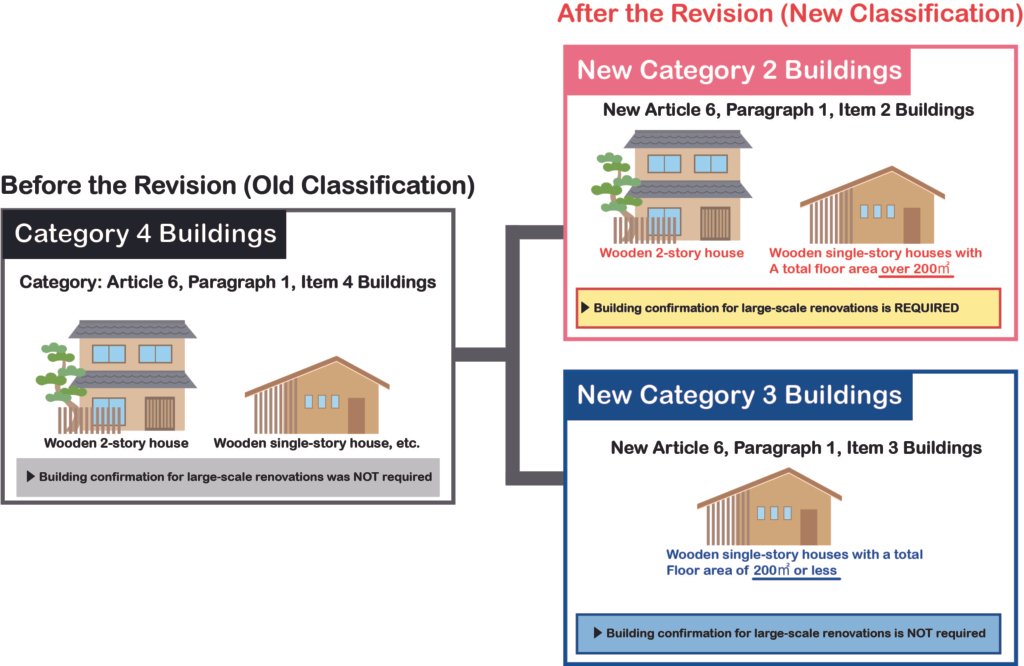New Renovation Rules Under the 2025 Building Standards Act Revision
In April 2025, Japan’s Building Standards Act will be revised, resulting in stricter regulations on the renovation of non-rebuildable properties. As a result, property maintenance and utilization will require more cautious planning than ever before.
■ Part 1: Non-Rebuildable Properties and the Impact of Legal Revisions ■
1.What Are Non-Rebuildable Properties?
Non-rebuildable properties are those that do not meet the “road access requirement” under the current Building Standards Act, meaning that reconstruction or major renovations are not permitted.
For example, land that does not have at least 2 meters of frontage on a road at least 4 meters wide cannot be used for new construction due to risks to emergency evacuation and fire-fighting operations (Article 43 of the Building Standards Act).

● Common Examples
- Row houses or detached homes located deep within narrow alleys
- Pre-war small residential buildings that do not meet access requirements
These properties, even when deteriorated, cannot be rebuilt, leading to increased maintenance burdens. Additionally, many banks do not approve loans for such properties, making resale very difficult.
That said, proper renovation can help maintain property value to some extent.
2.Three Major Impacts of the 2025 Legal Revision
● Stricter Renovation Restrictions
These properties have been treated as “non-conforming existing buildings,” where new construction or extensive renovations are restricted. A lack of modern earthquake resistance and fire safety standards is a serious concern, and legal limits often prevent meaningful upgrades.
For example, layout changes or structural seismic reinforcements typically require building confirmation applications, which are rarely approved.
● Expansion of Regulations Under the New “Category 2 Buildings”
With the 2025 amendment, the following types of buildings will be newly classified as “New Category 2 Buildings” subject to stricter standards:
- Wooden houses with two or more stories
- Single-story wooden homes with a total floor area over 200 m²
Once classified, these buildings must meet stringent seismic and energy efficiency standards. As a result, renovation costs and application processes will increase, raising the overall barrier to execution.
● More Rigorous Review of Structural Renovations
Renovations involving primary structural elements—such as walls, columns, and beams—will face even tougher inspections. Major work, such as seismic upgrades or adding insulation, will require pre-approval and are likely to involve extended procedures and longer construction periods.
① Subject to Building Confirmation Procedures
For large-scale renovations of two-story wooden houses and similar structures, starting construction after April 2025, a building confirmation procedure must be completed in advance.¹ ²
However, renovations involving plumbing areas such as kitchens, toilets, and bathrooms, or barrier-free improvements like handrail or slope installations, do not require this procedure.³
¹ “Large-scale renovations” as defined by the Building Standards Act refer to repairs or modifications involving more than half of one or more key structural elements of a building (walls, columns, floors, beams, roofs, or stairs). For example, replacing staircases or fully re-roofing is applicable. However, merely changing surface materials on walls or roofs is not included.
² The building confirmation must be completed before construction begins. If the current structure does not meet the latest legal standards, additional work may be required to bring it into compliance.
³ Depending on the scope of the work, even minor projects may fall under the category of large-scale renovations. Please consult a building official or designated inspection agency in advance.
